PESU is an electric bike company started in Shenzhen China in 2016 that is launching a first round of products through Kickstarter and Indiegogo crowd funding websites. As this review was underway, their Kickstarter campaign had raised more than double the goal and the PESU Monster 252W was the most economical offering. This is a mid-level value priced electric bike with fancier LCD display system, centerdrive motor from TTIUM, and 522 watt hour Lithium-ion battery pack. What struck me as being unique, was how nice the color display panel was, that the bike offered two USB type A charging ports, and just how small and quiet the motor was when riding. Although the bike is priced at $1,599 USD, the crowdfunding websites list an additional $99 for shipping to the US, $299 for Canada, and $399 for parts of Europe (which appears to include VAT). Considering that PESU is only offering a seven day money back policy and thirty day exchange for another bike, and because you’ll have to partially assemble the bike without dealer support, it’s worth doing some introspection on how comfortable you would be “on your own” with this thing. This is one of the big reasons I was so excited to review it! I got to meet part of the PESU team at Interbike in September 2017 in Las Vegas and they had the Monster and slightly nicer Valador on hand for test rides… possibly with the intention of courting US dealers? As the show was winding down, they gave me one of the Monster 250W models to take home for this review. Before leaving, I asked what PESU stood for and was told “Power Energy Speed Unlimited” and that they had one team member stationed in California who could answer questions and help me out. And so, I secured the bike to my car rack and drove to Colorado… through some heavy rainstorms. After two days of driving, I took the bike off of my car rack, hosed it down gently, and wiped the water away with an old towel. I let it dry overnight as I charged up the battery pack and then took it for a test ride. The performance was quiet good, and I was able to get an idea for some unique design choices such as the elevated chainstay (notice how both sections of chian run below the right stay), the smaller 14 tooth chainring (which is roughly equivalent to a 40 tooth traditional ring), and flipped stem (which made the bike feel more spread out and aggressive). I would probably flip the stem to be angled up for a more upright and comfortable ride, but it’s worth noting that PESU is selling the Monster in three sizes for improved fit regardless of stem position.
Driving this model is a 250 to 500 watt internally geared mid-motor from TTIUM that is called the Efficient+. It’s the mid-level offering in the TTIUM line which offers up to 99 Newton meters of torque and 120 RPM pedal cadence support. To me, it felt powerful, but not as quick to start and stop as Bosch. Also, I didn’t notice a big difference in performance when switching through assist levels 1-4. Interestingly, the unit was able to power me up to ~18 mph before easing back, but the Kickstarter campaign proclaimed that this bike would only reach ~13 mph… so maybe the speed was converted wrong or lost in translation? Maybe I got a slightly modified version, I wish I could say for sure but the communication was a little difficult because the TTIUM and PESU team members I spoke with seemed to be more fluent in Mandarin Chinese than English. In any case, the other TTIUM motors include the Intelligent+ which peaks at 83 Nm and 100 RPM or the Powerful+ which peaks at 130 Nm and 120 RPM. I do not know how much any of these motors weigh, but the medium-sized 19″ PESU Monster 250W weighed ~48.3 lbs when I took the measurement. This motor is new to me and I do not know how well it would perform over the long run, but the design seemed to take some cues from Bosch. It uses a smaller 14 Tooth chainring which spins through a reduction gearbox inside the motor at 2.8 revolutions for every single pedal rotation. This adds some friction and work to each pedal stroke, but not that much in my experience, and the bike coasts without any additional friction because the rear wheel freewheels. Beneath the motor is a plastic skid plate with several large holes for ventilation. The sides of the motor are also black plastic and the chainring is surrounded by two Aluminum alloy plates that act as a guide to reduce drops, a bash guard against foreign objects, and a chain protector to keep your pants from snagging or getting dirty. This motor does not offer shift detection, but relies on rear wheel speed, pedal cadence, and pedal torque to determine performance… so easing back a bit with your pedal power when shifting will help to reduce mashing. I cannot say for sure, but there has been some reports of chain suck with the Bosch motors that use a 2.5x gear reduction because the chainring is small and some mud can sort of glue the chain into place and keep it on track vs. releasing at the bottom. This seems to only be an issue in the most extreme cases, but could apply here. I noticed and instantly appreciated the higher end Shimano derailleur and 9-speed cassette, but only used the lowest 1-6 chainrings in practice, with a top pedaling speed of ~24 mph on flats. I feel like PESU could work with TTIUM to get an even smaller chainring or maybe a larger rear sprocket to offer more low gears which would be useful for climbing or slow riding.
Powering the bike, those two USB ports, and the large 2.8″ color LCD display is an impressive downtube-mounted battery pack. The impressive part is how much energy it stores, 522 watt hours (36 volts, 14.5 amp hours). That’s above average, and the energy will allow for longer rides and further distances per charge. Given this larger capacity, I love that PESU appears to be using a faster three-Amp charger. It felt higher quality than a lot of the generic stuff I see on other value e-bikes. The other impressive thing about the pack is that it clicks in from the left side vs. down from the top. It’s similar to the Yamaha battery design, though not as short… more of a hybrid of the Bosch form factor and Yamaha mounting interface that works very well. It does weigh a bit more at ~7 lbs compared to the 5.7 lb Bosch Powerpack 500, but it does offer more juice. Maybe the cells inside are a bit more average to save money or maybe the USB charging port and large LED power indicator and button on top add that extra weight? In any case, the top of the pack has a nice indentation that acts as a handle. If you take the battery off the bike, you can use the rubber button on top to turn it on and get USB power on the go, like a backup energy bank. The way this battery mounted, a locking core would click as you pushed it in from the side, and this worked whether the key was inserted or not. Below the pack, four metal blades would make contact to send electricity, and these all stayed dry after my long wet car drive and hosing the bike off. The battery and display panel are rated at IP65 while the motor is IP54 (these being water-resistant ingress measurements, higher is better). As a final note, the charging port and USB A port are both located near the lower right side of the battery, accessible even when it’s mounted to the frame. If you choose to access and use these while the battery is mounted, just be careful that the right crank arm doesn’t pass by and bend or snag the wires. They are situated fairly close together and given the lack of a kickstand on this bike, it just seems more precarious, like if the bike tipped and pulled the cord tight and bent the plug etc.
Booting up the bike, once the battery is charged and mounted, is a two-step process because of the battery power button. You start with that and then hold the power button on the control pad which is mounted near the left grip. This takes a couple of seconds, but the display eventually comes on and shows one of three dashboards. You can cycle through these layouts by pressing the i button, or you can hold he i button to access a settings menu. This is where you clear the trip meter, change units from mph to km/h, or adjust display brightness. One section had wheel size and top speed listed, but I couldn’t adjust them, and the displayed 27 mph top speed was definitely not attainable in practice… so I’m not sure what that’s all about. The display also shows a battery infographic with battery percentage, which is much more useful than a five-bar graphic (representing 20% steps). One thing I did not see was range estimate, a feature that more and more companies are adding to help riders make sense of battery level. Range is going to depend on how full the battery is, what the terrain is like, and how heavy the rider and his or her gear is. Even keeping your tires at the higher end of the PSI range and locking out the suspension will help… but you can probably expect 25+ miles per charge in even the highest level of assist with some hilly terrain. Anyway, to add more power to the PAS pedal assist system, you use the + and – keys on the button pad to navigate from zero (no assist) through 1-4. Clicking the buttons is easy, but I found myself accidentally reaching further than the plastic + and – keys to the rubberized lights, i, and power button. They just felt more familiar to me vs. flat and featureless. I think this is one area that TTIUM could improve, adding some physical brail -like texture to their + and – keys so you can use them easier without looking down while pedaling. I also found that there were portions of the buttons that allowed them to click more consistently, the middle sections (towards where the + and – keys meet) is the best vs. the top or bottom edges. The plastic covers also seemed more fragile than the rubber, and could get snagged and ripped up more easily (based on my experience with some other, similar button pads from Bafang as you might see on the EVELO Quest One.
After using this electric trail bike for a few days on pavement and dirt paths, my excitement about the value price began to diminish a bit because of the discovery of shipping and the realization that I might have to compromise on rack and kickstand accessories. The motor is alright, but I might opt for the more expensive PESU bikes to get at least 20 mph. I was pretty happy with the 18 mph for climbing and trail riding but would regularly pass that on pavement, and then I was doing all of the work with no motor support. I found that there where times where I had to shift gears to really feel the motor power, even with the 120 RPM support. The motor is there, but it really shines in the lower cadences, much like the Yamaha PW motor. Bosch is still one of my favorite motors, followed by Brose, for offering fast support and a sense of increased power with higher assist levels… but Bosch makes more noise than Brose, and I have found Brose to be a bit more expensive than this new TTIUM motor. This electric bike is really good looking, I like the colors and wire integration, the large 180 mm hydraulic brakes are excellent, and the Shimano levers offer some adjustable reach for those with smaller or gloved hands. I would probably replace the pedals with something larger and tougher, and I might get a seat post suspension to further smooth out the ride. The fork is a bit basic, but it delivers a good enough experience and has lockout and rebound for different terrain and rider weights. I love that both wheels offer quick release and was impressed that the rear wheel uses a 12 mm thru-axle vs. the standard 9 mm skewer. This will be stiffer and stronger for riding off-road but most importantly, dealing with the power of that motor pulling the chain at up to 99 Nm plus your own pedal force. All in all, it’s a fun product and I’d like to thank PESU for giving me the bike to shoot this review. I plan to donate it to a local young person who could use an ebike for transportation.
Pros:
- The TTIUM Efficient model mid-motor proclaims to offer up to 120 RPM pedal support which is on par with the Bosch Performance Line, Yamaha PWX, and Shimano E8000 drive units so you can spin faster and shift less frequently while still reaching higher top speeds, it performed well in practice during my test rides
- The TTIUM display and battery pack each have a 5 Volt 1 Amp standard sized USB A female port built in, so you can charge portable electronics on the go or by using the battery off the bike as a backup power source (this may be why the pack has its own on/off button), if you try to use the battery USB port while riding, definitely get a right-angle adapter and keep the wires very tight to the frame so they don’t snag on your foot or the right crank arm
- The battery charger that comes with this electric bicycle is actually pretty nice, it weighs about two pounds, has a removable wall-side plug to make it easier to store, and it offers three Amps of power flow vs. most generic chargers that only offer two amps
- Excellent weigh distribution with both the motor and battery positioned relatively low and near the middle of the frame, also, I feel that this bike is fairly slightly lighter than similar products at 48.3 lbs
- It’s neat to have standard sized USB ports on both the display panel and battery pack so you can charge your phone, GPS, Garmin, music player, or aftermarket lights while riding or use the battery as a backup power bank
- I love that the display panel shows battery level as a percentage as well as an infographic, it’s much more precise than most competing displays that just show five or even ten bars
- The chainring has alloy plates on either side, creating a guide so you won’t drop the chain as easily, and these plates also act as a bash guard and protector for pant legs and shoe laces, keeping them clear of the greasy chain
- Fantastic hydraulic brakes from Shimano, these offer large 180 mm rotors for increased stopping power and heat dissipation, the levers are adjustable so you can bring them in if you got the smaller frame size and have smaller hands or wear gloves frequently
- For what I would consider to be a more affordable electric bike, I think it’s neat that they are offering three frame sizes, this improves fit and comfort when you ride on bumpy terrain or for longer distances and times
- The 9-speed Shimano Acera drivetrain is pretty good, several steps up from the base level component group from Shimano and even though I didn’t use the three higher gears, it worked well enough for climbing with assist, if I were going to adjust anything I might go for a slightly smaller chainring to provide more low-end options
- The stand over height on this bike is lower than a lot of other mountain models I test, the 27.5″ wheel size and thinner 2″ tires bring the frame down and the top tube is very angled because the battery seats in from the side vs. down so there doesn’t need to be as much clearance
- Rather than using a standard 9 mm skewer for the rear wheel, PESU upgraded to a thicker 12 mm turu-axle which is going to handle the torque of the mid-drive motor better and reduce flex when riding on trails or taking hard turns
- The TTIUM motor was very quiet, even when riding in the highest levels of assist and spinning fast, it just didn’t make as much gearing or mechanical whining noises as most of the other mid-drive motors I have tested, it’s closer to the Bafang Max Drive in terms of sound
- I personally think the paint colors and accents they chose look great, the bike is sporty and fun but not tacky or overly loud like some of the other value priced bikes
Cons:
- The model I reviewed here is a being sold on Kickstarter with an estimated delivery date of November 2017 but that could be pushed out even further, the campaign lists a risk as follows “These high-performance components we adapted in Volador and Monster usually have a longer delivery dates”
- In order to activate the bike, there is a two-step power process which includes pressing the circular rubberized button on top of the battery pack and then holding the power button on the control pad near the left grip, this extra step adds time compared with systems I have reviewed from Bosch, Yamaha, Brose, and Shimano
- The TTIUM Efficient model centerdrive motor only assisted me up to 18 mph vs. 20 mph on most competing products, however, the Kickstarter campaign said it would only go to 13 mph so the actual performance was kind of a nice surprise
- In my experience, the different assist levels feel very similar in terms of power and torque, when switching from Eco to Normal, Standard, and Sport I noticed that the bike would go faster, but the motor still felt the same in terms of response
- The chainring spins 2.8 times for every one crank arm revolution which requires an internal gearbox, much like some Bosch models which spin at 2.5x, this adds a minor bit of resistance when pedaling (especially if the bike is powered off), it also positions the chain closer to the chainstay which could increase slap (however, the XC Monster model runs the chain below the chain stay rather than around it like most traditional e-bikes I have reviewed)
- The plastic plus and minus keys on the control pad seemed a little delicate, like if you snag your shirt sleeve or glove on them (going upward) the plastic could get lifted or bent, I have seen this happen on a specific model of Bafang control pads
- Sometimes it’s nice to use a hardtail cross country mountain bike like this for around-town riding or even commuting with some dirt paths mixed in, but it doesn’t have any bottle cage bosses, a kickstand mount, or rear rack bosses so you can’t mount these accessories as conveniently or securely, consider something like the Thule Tour Rack which mounts to the seat stays vs. just the seat post
- It looks like you have to pay extra for shipping and VAT which could be $99 in the USA, $299 in Canada, or $399 in parts of Europe, and then you have to assemble the bike yourself too, so there’s a trade-off vs. buying from a shop
- The pedals are pretty basic and don’t offer as much stiffness or durability as alternatives like these affordable Wellgo BMX platform pedals, I find that the cage style ones can get bent and I just don’t feel as solid on them
- The tires have a decent PSI range and I love that the wheels offer quick release so you could swap different tires or fix a flat quickly, but for optimal comfort I might upgrade the seat post to a 31.6 mm SR Suntour NCX Suspension post
- Minor bummer, the display panel swivels to reduce glare but is not removable… so it could take some scratches if parked at the bike rack frequently and the rain and direct sunlight might degrade it a little
- The TTIUM Motor, like most of the mid-drive systems I have tested from Yamaha, Shimano, Brose, and Bafang, does not have shift detection or shift sensing so it could wear the chain, sprockets and derailleur down a bit more if you don’t ease off before changing gears to reduce mashing
Resources:
- Official Site: https://www.pesucycling.com/
- More Pictures: https://photos.app.goo.gl/nCfCLUK84X1TXoZt2

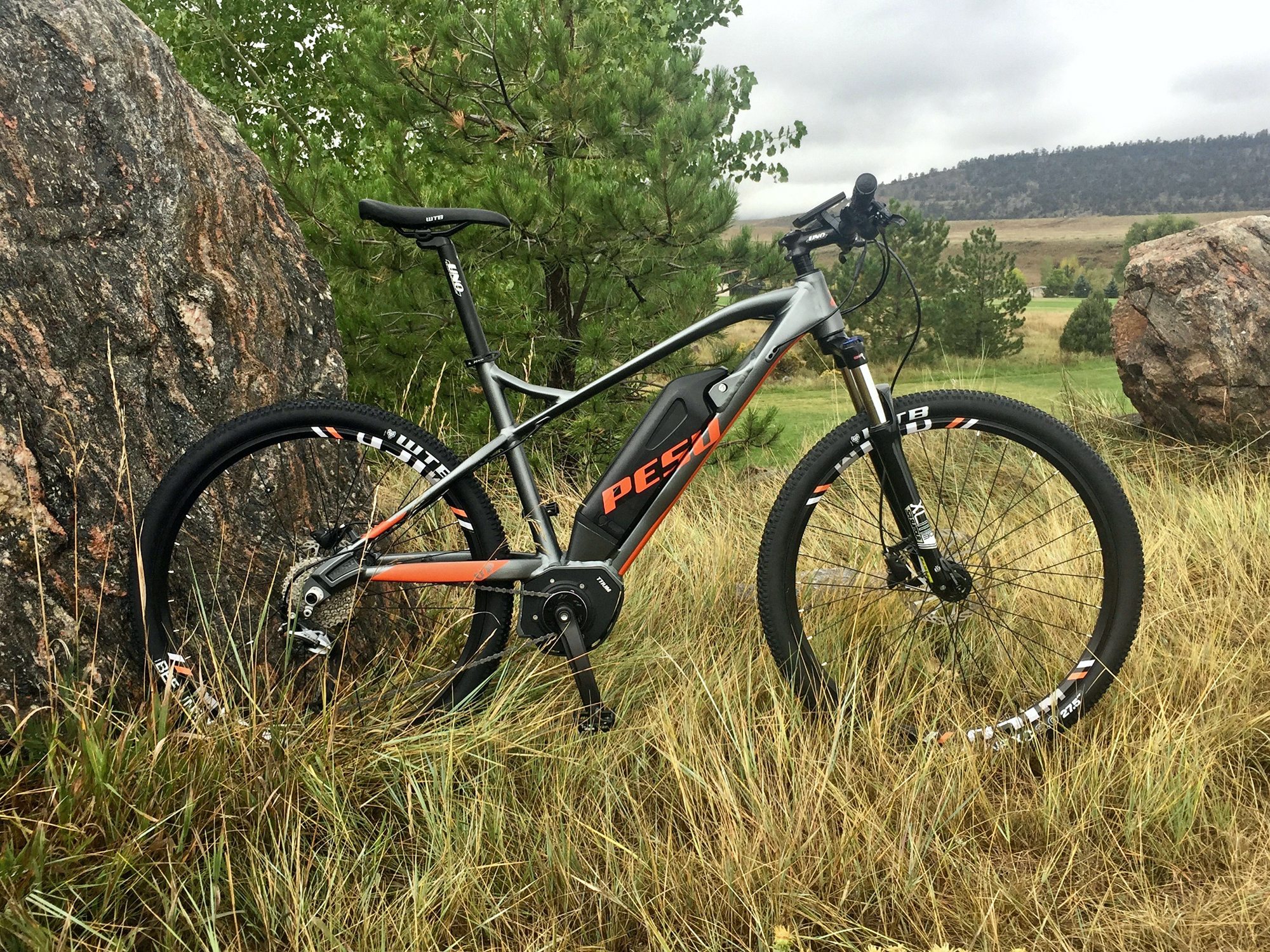
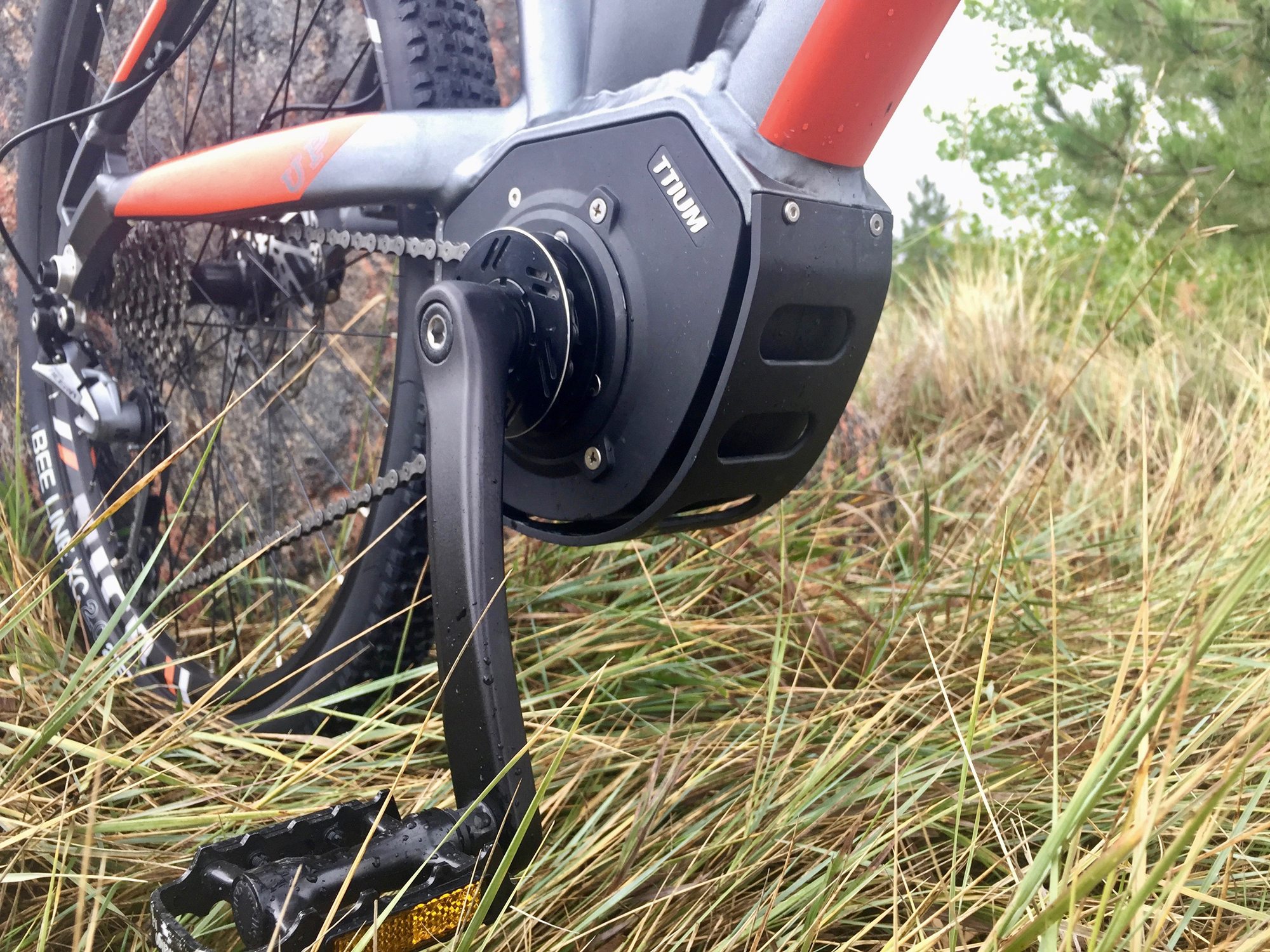
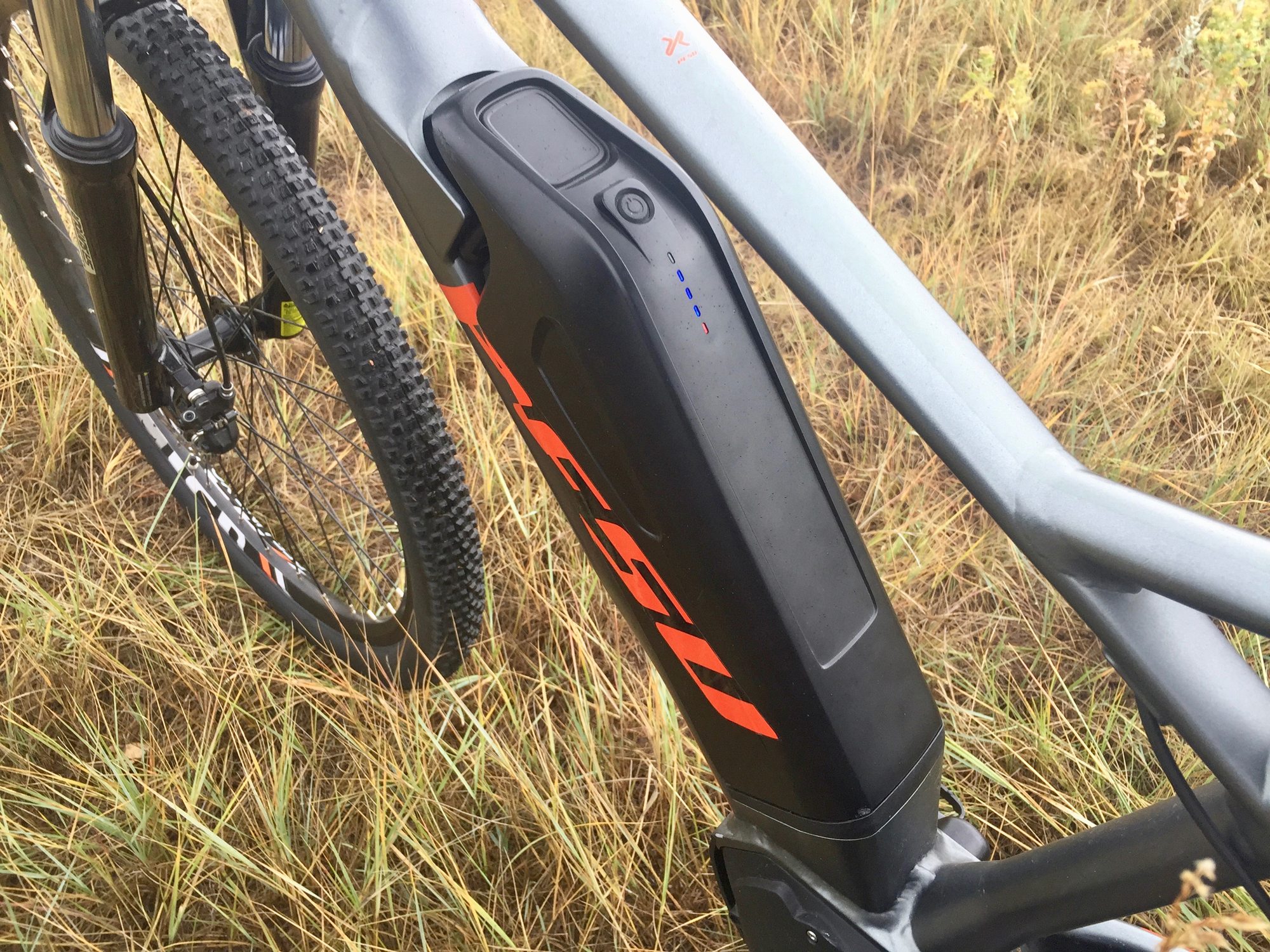

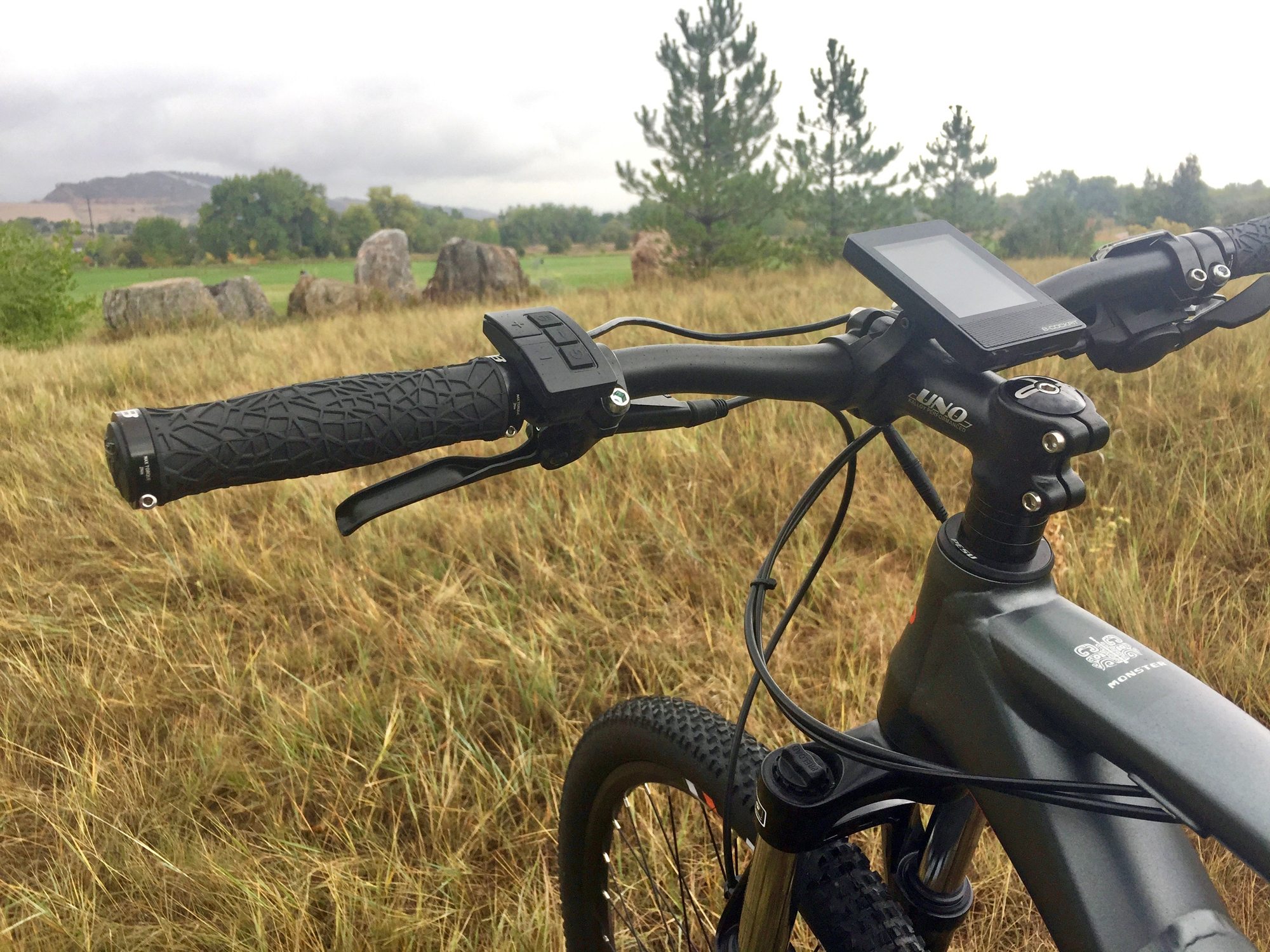
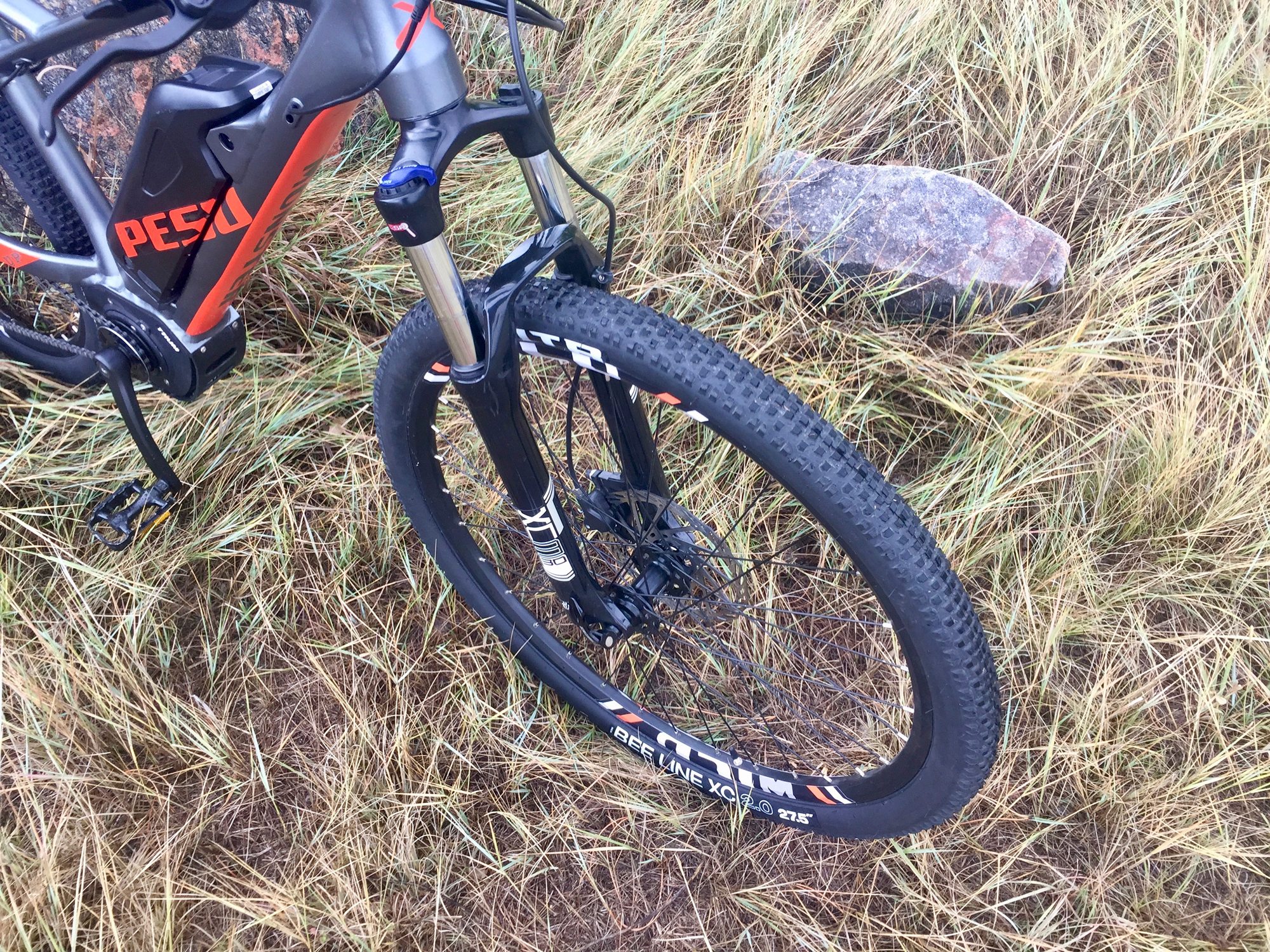
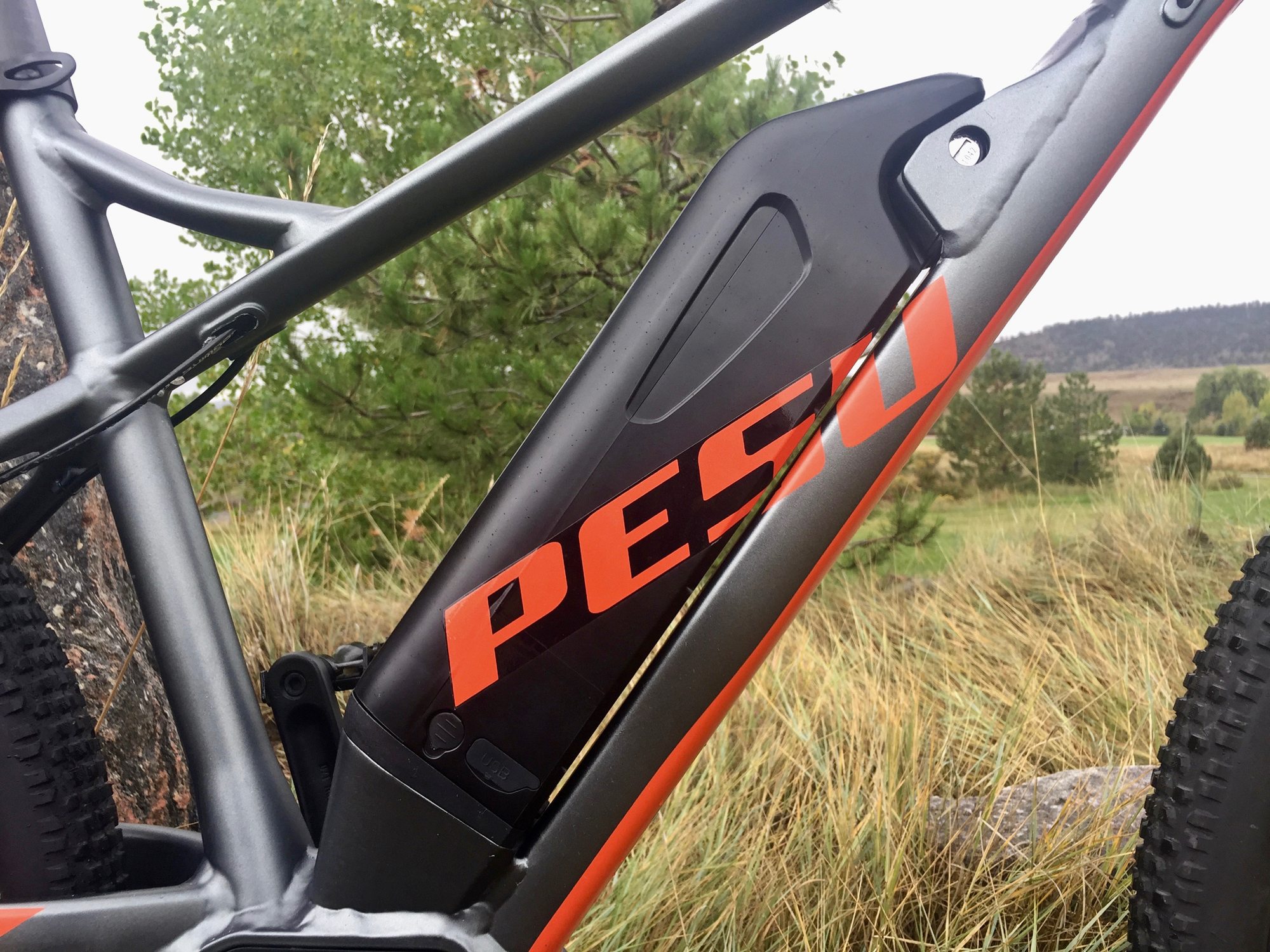
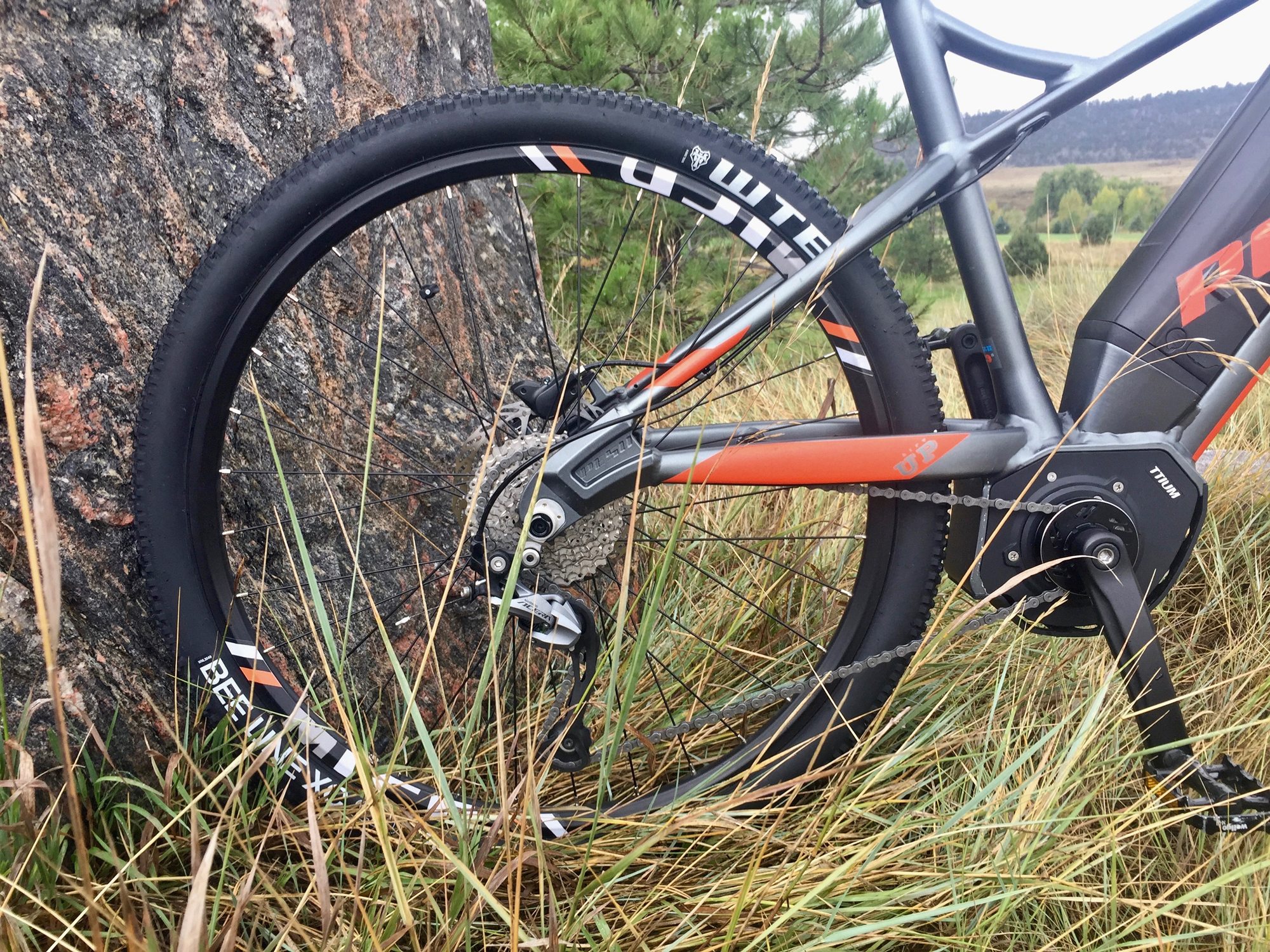
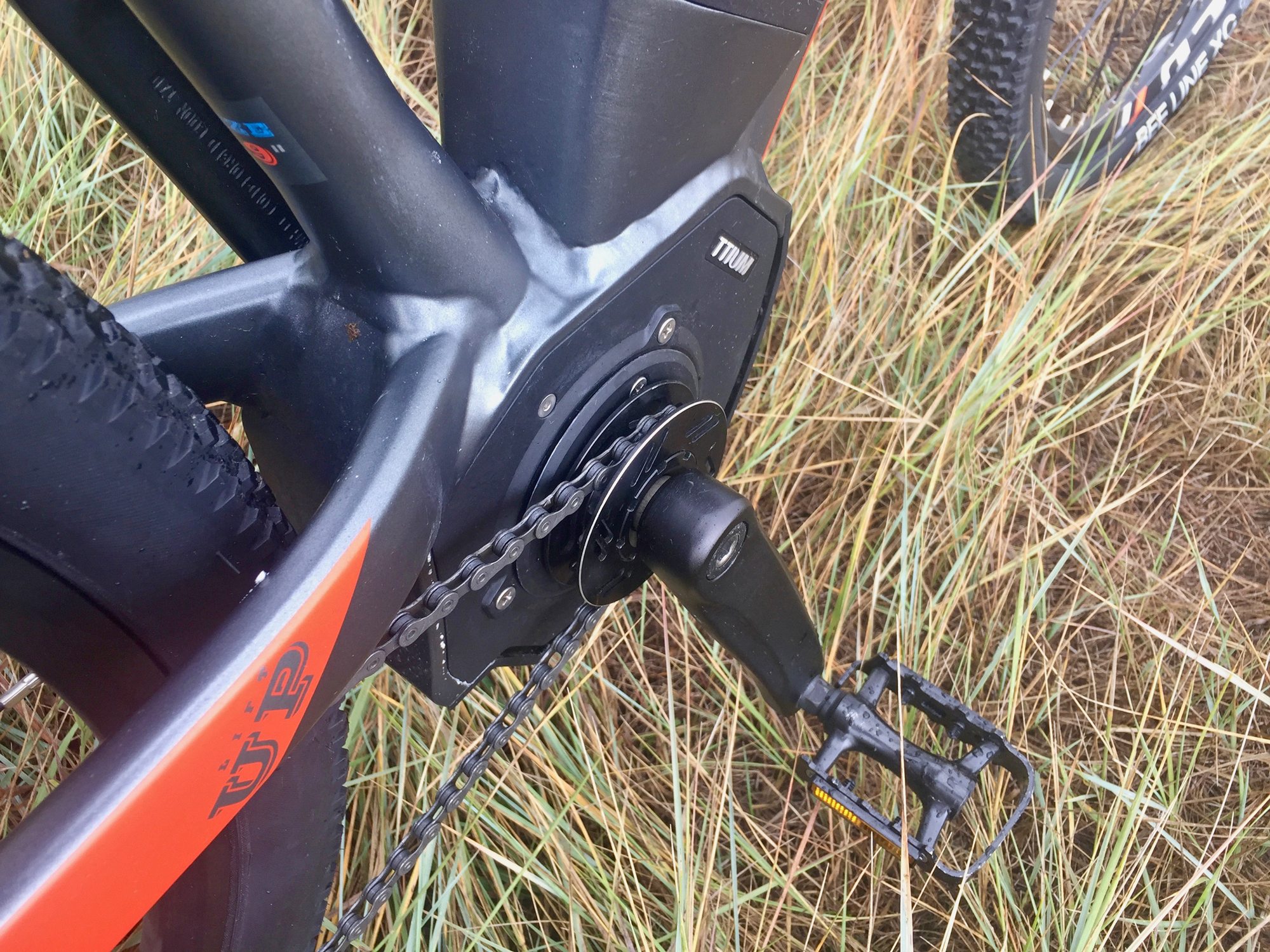
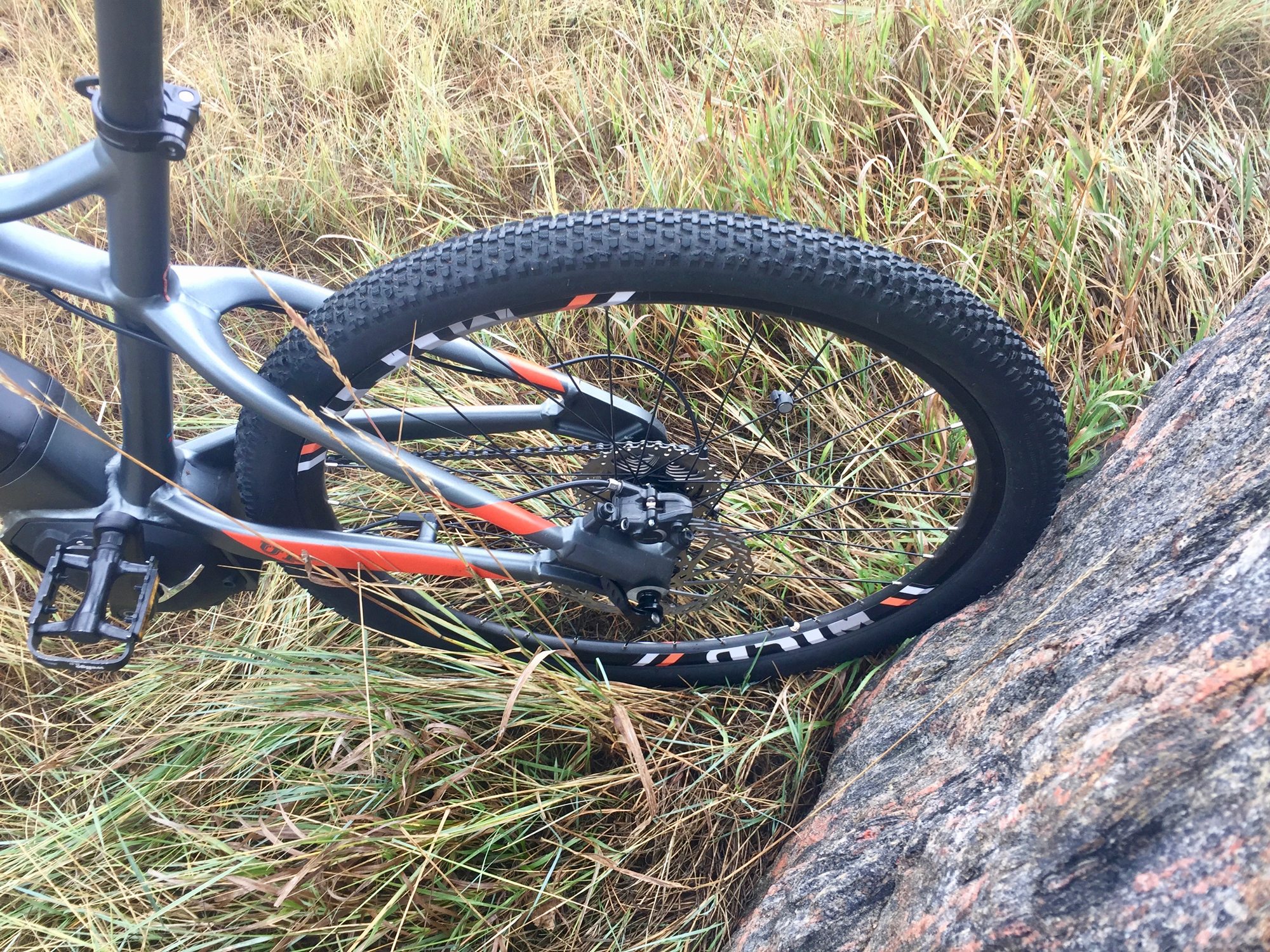
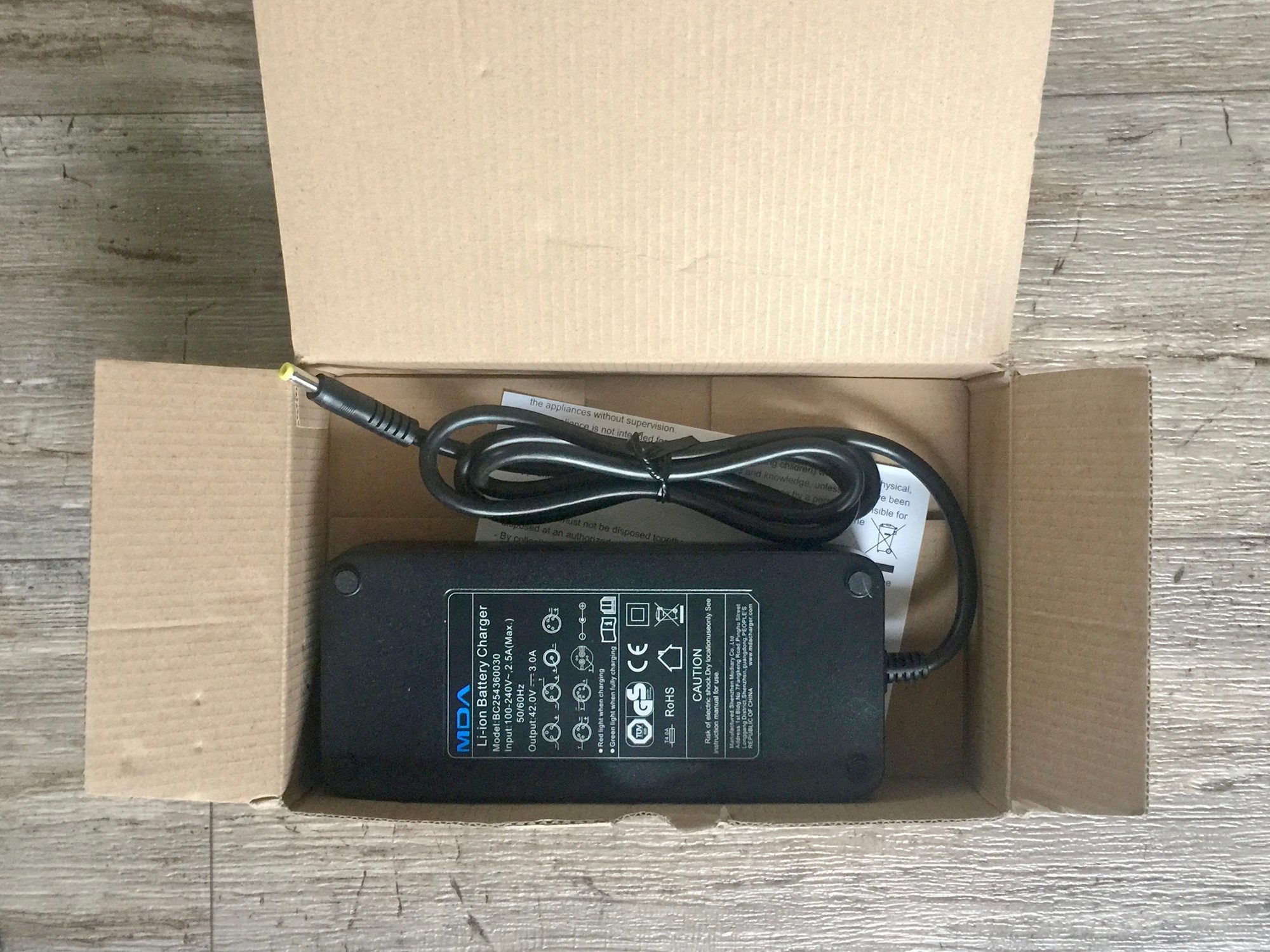

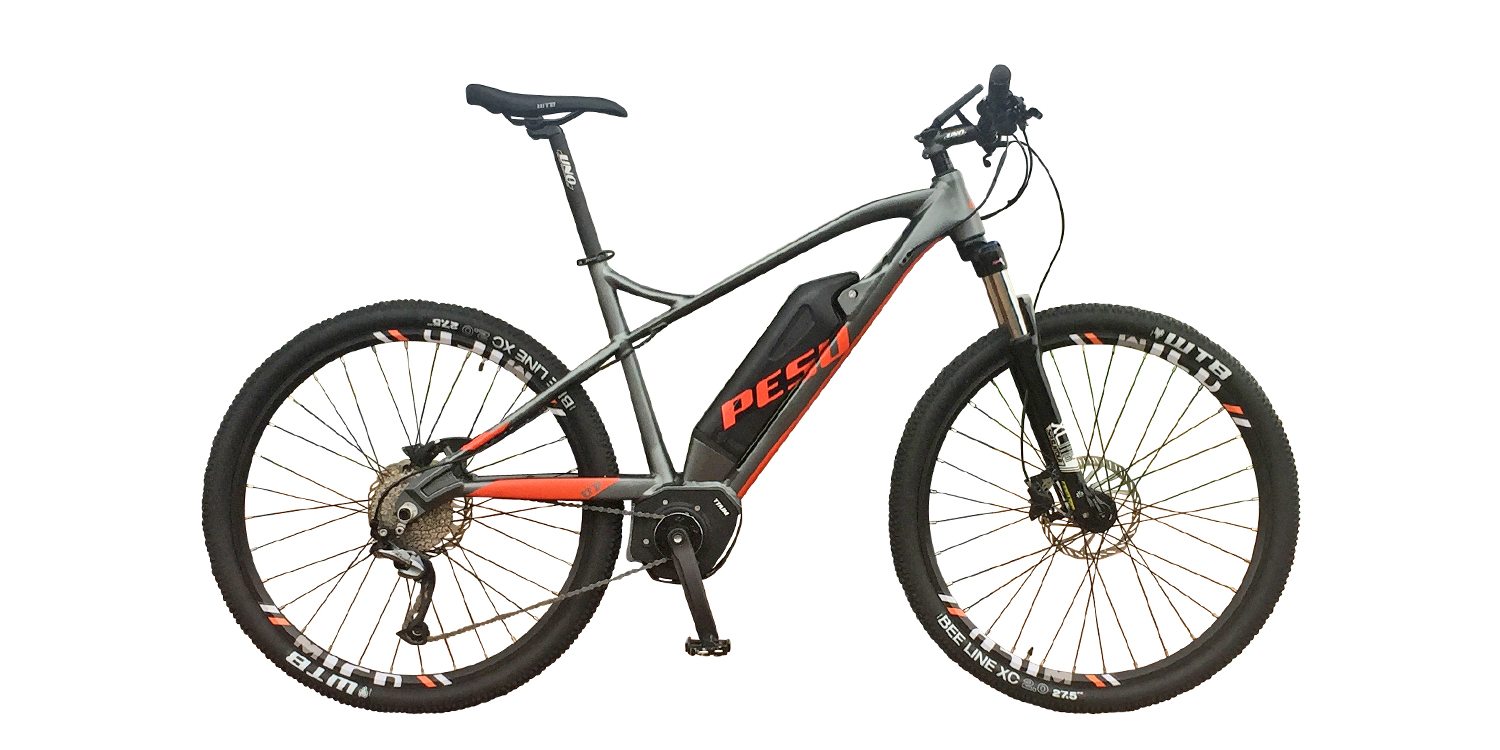
Kenneth Maruska says
Does anyone know if they met their funding goals to put these bikes into production? Looks like they have a good product but I would convert it to a urban bike if I purchased one.
Court Rye says
Hi Kenneth, it looks like they raised 2x their funding goal on Kickstarter and that campaign is now closed, but they are also raising some money on Indiegogo here.
PESU Cycling says
Hi Court, thanks for your detailed review! Really impressive! Here’re some points we’d like to share:
Thanks again for your review Court. For more details mentioned in your review our tech team will go through and see if we have other to add in supplement. BTW, we’re now on Indiegogo, anyone who interests please check here at igg.me/at/pesu.
Court Rye says
This is excellent, thank you for the updated details and feedback about how you will be improving the product. I appreciate the opportunity you provided for this review and hope we can cover some of the other models in the future. Keep up the great work guys! I also created a special forum area for PESU here for discussion.
Jereme Patterson says
Thanks for the information and review! Can you comment any further on the frame size and what you might recommend for a 5’7″ monster used mainly road/gravel-road or hard-pack trail biking? Was unsure if 17 might be too small or 19″ too large. Thanks!
Court Rye says
Hi Jereme! These bikes seem to run small, or at least the sample model I reviewed. I would probably go for the larger one myself, being 5’9″ and that’s even with my preferred upright riding position. You could make sure the stem is above the spacers and angled up, or even replace the stem if the bike ends up feeling too large (get a shorter and steeper one). I hope this helps :D
Mike R says
Looking for a trail bike. Was temped by the PESU Monster 350W, but it looks like I can get a closeout HaiBike HardSeven 4.0 Sduro for a few dollars more. Which would you buy?
Court Rye says
Hi Mike! I would definitely go for the Haibike because there are dealers nearby that can service it. I also feel that Haibike has more resources and a bigger investment in support. In a few years, you could probably still get Haibike parts but the PESU brand is newer and only barely available in the USA and Canada (where I live) so that would definitely inform my decision and be worth paying extra for. I hope this helps!
Fred Vaughn says
My Pesu Monster 350w arrived finally on June 1, 2018 from the Kickstarter campaign. I had ordered in Aug. 2017. A long wait but it is a very nice bike. My problem was the speed limit was set at 19mph. Pesu said where I lived In WV had no ebike laws, so the speed limit was set under the US federal laws which is under 20mph. I found out how to up the speed limit to 28mph using the LCD display. This does also work on Juicedbikes and maybe more. Here is a youtube vid of how to increase the speed limit.
court says
Awesome! Glad your bike finally arrived Fred, just in time for summer :) and thanks so much for the link to that YouTube video explaining how to adjust top speed. It looks like you just turn it on, press i for menu, hold + and – for a few seconds for settings, proceed by pressing i, then go to speed limit and raise or lower it :)
Akeron says
this bike is really good. the engine is powerful, almost as much as a high-end Yamaha mountain bike. The bike is adjustable by software, allowing to pass the engine assistance up to 45km / h. Rather nice to do the road and go to work. On the other hand it is a VTC, with certainly mountain bike possibilities; but we are not on a real mountain bike for very rough terrain. the Pesu motor is too small and the front is too mediocre.
The other pieces of the veneer have been judiciously chosen for their value for money. I really recommend this bike. In addition to the service PESU and very reactive and very nice.
court says
Thanks for the feedback Akeron! Have you tested this ebike, or do you own one? I agree that it offers a pretty good performance and value, neat to see a new contender for electric bike motors :)
Fred Vaughn says
Akerson, Just wanted to see if you knew of a Facebook group called Pesu Ridersclub. Meet other owners and ask questions to Pesu representative.
Court says
Interesting, thanks for the heads up Fred! I hadn’t heard of this club but did a search on Facebook and found it here. Hope you, Akeron, and other Pesu owners have a great time :D